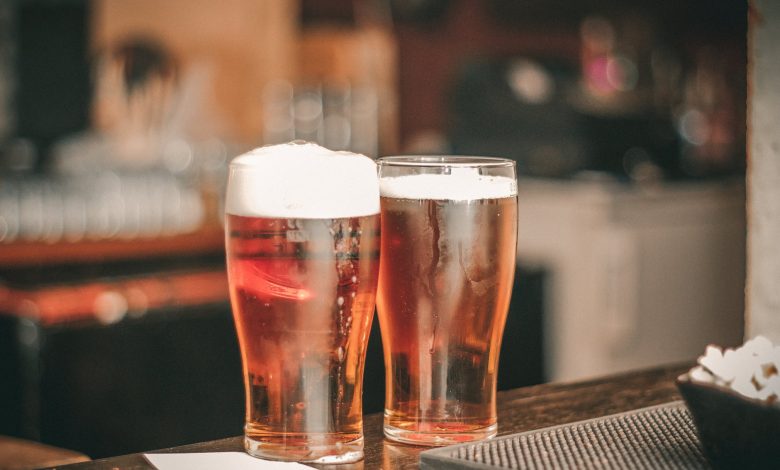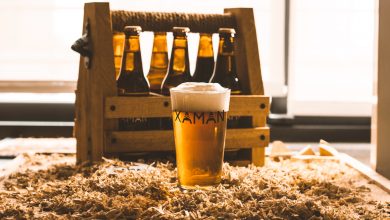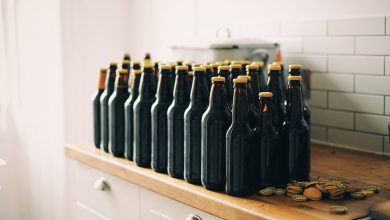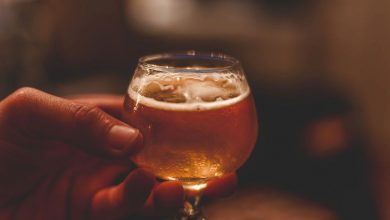17 Words That Have to Be in The Dictionary of a Beer Lover

Drinking has been part of life for humankind from times immemorial. Literally! Some anthropologists believe that the brewing and consumption of beverages that may have been intoxicating could have emerged as soon as Man moved from a nomadic lifestyle as hunter gatherer to put down roots at one place to follow agricultural pursuits. Grains were grown, and then they were used to brew beverages that were intoxicating, as well as to make food stuffs. The very first documentation of brewing comes from an 18th century etching that depicts the inside of a brewery.
But who were the first brewers? Where did they live? Well, there is evidence to show that the first people to brew beer lived in Babylonia. Flanked by the Euphrates and Tigris rivers, these early brewers might have started this practice some 5,000 years ago. The Babylonian king, Hammurabi, actually had laws about beer wherein the drink was well defined and segregated into an impressive 20 varieties. Beer pubs in those days must have had an extensive menu for sure!
Surprisingly enough, it was brewing beer that paved way for what is perhaps the first step in the right direction for women empowerment. You could say that the very first entrepreneurial opportunities that women enjoyed in the terrifically male-dominated society that prevailed during the 1300s came by thanks to beer. It was during this period that women, traditionally the beer brewers, opened ‘alehouses’ that provided them an income of their own. Financial independence thanks to beer!
Beer is now part and parcel of the American lifestyle as well, a quintessential component of the typical friends’ gatherings, party scene, social events, and of course, the best part of the game night too.
If you have recently acquired a taste for this wonderful beverage, the most consumed alcoholic beverage world over, mind you, then you may be raring to become a true aficionado in every sense. Be it the slang or the swagger, you want to fit in with fellow beer lovers at your local watering spot. Well, let us start you off by introducing you to 17 terms that every beer lover MUST know, including some that just make you sound really cool on beer night. Here’s to becoming a true cerevisaphile! (Not sure what that means?? Let’s start with this one then.)

Term 1: Cerevisaphile
That’s what you get to call yourself if you are a true lover of beers. This term is derived from the Latin name Ceres, for the goddess of agriculture. If there is a conversation about hobbies at any time, sneak this term in, call yourself a cerevisaphile and impress people! Since we are on the topic of Goddesses anyway, here is another Goddess that a beer lover might want to know- Ninkasi. Ninkasi is the goddess who is officially the heavenly brewer, that is, she makes the brew for the gods. Her names translates into ‘the lady who fills the mouth’. You want to keep this goddess happy if you like beer!
Term 2: Zythophile
The Urban Dictionary also has another cool sounding name for beer lovers. Zythophile- a person who loves beer, and everything to do with beer. So, if you are a zythophile, your conversations tend to center around beer too, and you are probably a storehouse of information and trivia about this alcoholic beverage! So, are you a zythophile?
Getting on to more serious stuff. Here are the terms you may come across commonly when you are hanging out with fellow beer lovers or the terms that you MUST know to ascertain exactly what it is you are drinking and what you want to have.
Term 3: ABV
Alcohol by Volume or ABV is probably the most significant term that a new beer lover should know. ABV tells you how much alcohol your beer contains, in percentage terms. The mildly alcoholic beers would have about 3% alcohol, while a really strong one like Utopia would have a substantial 27% of alcohol of the total volume.
Term 4: Ale
You have heard the term before, but you probably don’t quite know exactly what it refers to. Well, ale is a kind of beer that is made using top-fermenting yeast. Another difference with ale is that it is fermented at higher temperatures. If you enjoy a fruitier taste that also comes with a tang, ale is right for you.
Term 5: Balance
Balance is the term you use to describe how the various flavors weigh against each other in your beer- in particular, the taste of malt, the sweetness, as opposed to the bitterness. A beer sommelier may find the balance in his beer just a tad skewed, while you find it perfect, so balance does depend a lot on both experience and personal preference.
Term 6: Bitterness
While on the subject of taste, let’s talk about the bitterness of beer. Beer tastes bitter because of hops- a cone shaped flower of the Humulus Lupulus. Hops add not just bitterness, but also aroma and a rich tapestry of other flavors to your beer. There are, in fact, two kinds of hops- bitter and aromatic. They may be added at different times during the brewing process depending on how much and which kind of flavor or aroma the brewer wishes to get in the beer. That’s not all; hops also act as a good preservative and lengthen the shelf life of beer so you can see why they are used. If you like beer that has a strong bitter flavor, you would be called a hop-head.
Term 7: Barrel
One of the most common measurement terms used with beer, a U.S. barrel, can take 31 U.S. gallons of the good stuff. However, you will typically find kegs that are half-barrel size, that is, 15.5 U.S. gallons. On an aside, an English quarter barrel, not a term too commonly used here, is called a firkin, and it has a 9 gallon capacity. By the way, breweries talk about their annual output in barrel terms. They use the abbreviation BBL, and if a brewery claims that its output last year was 5,000 BBLs, you know that they produced 5,000 31 U.S. gallon barrels.

Term 8: Bottle conditioned
When a beer has been carbonated by re-fermenting it in the bottle, it is said to be bottle-conditioned. You will find that these beers come with a sediment at the bottom of the undisturbed bottle. That’s yeast that you see there, and you want to leave it behind when you pour out the beer into glasses. If you are heading to a popular craft beer hangout and you want to know exactly what bottle conditioning means, here is what you need to know: Non-bottle conditioned beer is carbonated by pushing in CO2 forcefully into the sealed bottle of beer. The CO2 dissolves into the beer and makes it fizzy. Conditioned beer is not artificially carbonated in this way. Here, it is the yeast that is allowed to work on the fermented beer just like it is during the fermentation process itself, but this time, the bottle is capped and sealed so that the CO2 that is a by product of the fermentation is trapped inside, carbonating the beer.
Term 9: Bottle share
If you are new to beer gatherings, this is one thing you must know to prevent socially awkward situations. Bottle share or Share is when everyone brings along their own beer, and then shares with everyone else. You might end up meeting total strangers at a bottle share evening because the idea is to share the good stuff as much as you can, enjoy different tastes, and get to experience them. Depending on the size of the gathering, you bring along either a bottle, a six pack, or a dozen, but if you brought just one bottle, don’t end up drinking sox on your own. That would make this your last bottle share in all probability! You might come across some rare, exotic beer varieties at bottle share evenings, so pay attention to what you are drinking. This is also a good occasion for people to bring homebrews for others to taste and review.
Term 10: Brewpub
A brewpub is a place where beer is brewed on premises and served to its customers. There are some states where it is not legally possible for breweries to sell directly to patrons but where it IS allowed, the law is that, to be designated a brewpub, the outfit sells a quarter of its brewed beverage to its own customers, on site. In fewer states, brewpubs can also let their customers buy beer to take home. A microbrewery is a place where, typically, you find craft beer being brewed, but this is not quite how you define a microbrewery. The more accurate description is that it is a place where limited beer is brewed, that is, fewer than 15,000 barrels a year and not more than 25% is served on site. A microbrewery’s primary order of business would be making beer that is sold in stores.
Term 11: Cat lap
Probably not very common here in the U.S., but this term is used for those drinking non- alcoholic beverages, such as tea or coffee. While it’s not quite a derogatory term, it is used disdainfully by beer drinkers and drinkers of stronger alcoholic beverages to denote those who do not partake, so be careful when you are describing someone’s drink as a cat lap.
Term 12: Craft beer
A craft brewer can be described as a connoisseur of his or her ‘art.’ Craft brewers usually have small brewing setups that turn out fewer than six million barrels every year. Actually, the Brewer’s Association says that craft breweries cannot produce more than three percent of the total market output, so if the market itself expands, the overall barrel per year count for craft brewers increases as well. Typically, these are independently owned establishments that have a full-malt or at least half malt beer as the primary or flagship product. The idea is to ensure that the major part of the craft brewer’s produce is made with traditional brewing ingredients.

Term 13: Cask-Conditioned beer
Also called ‘real ale,’ cask conditioned beer is unfiltered beer that is transferred to casks, carbonated, and then sealed so that some more fermentation takes place. Basically, the beer is re- fermented in its keg naturally. This kind of beer has a milder carbonated feel, but the flavors and aromas are both more diverse. This is LIVE beer with the live yeast still in the cask, and it tastes best at cellar temperature (next up!). You won’t have this kind of beer being propelled to the faucet by the CO2, but instead pulled to it with a pump.
Term 14: Cellar temperature
The ideal serving temperature for ales is known as the cellar temperature in the beer lover’s parlance. Generally, this varies between 50°F and 55°F. If you want to stash away your own private collection of beers for later use, you want your storage space to be closed away from heat and light, both because either of these can ruin a perfectly good barrel of beer. And your storage space needs to have a 50°F and 55°F temperature environment as well. If the temperature goes too high, your beer may not last very long. If the temperature is much lower, you run a risk of making the beer cloudy or hazy. The stronger beers flourish at the higher end of your temperature band, the standard ones in the middle, and the lighter ones at the lower end of the band.
Term 15: Lager
One of the most oft-heard terms at a beer pub, lager is beer that is brewed with bottom-fermenting yeast at a temperature between 48° F and 55° F. Lagers have clean, crisp flavor, and they are usually fermented for weeks to months at near zero temperatures to get the final fulfilling taste.
Term 16: Ticking
How would you know that a beer is a drain pour?? Perhaps by Ticking, which is when you go on a tasting session of different beers by taking a couple of sips of various types. You are ticking them off your list of beers to try here. Beer aficionados often go on ticking sprees when new beers are released, just so they can brag about having tried them. Oh, and you are called a ticker if you are on a tasting spree like this.
Term 17: Mouthfeel
This is a very common term you would hear at pubs and at gatherings with fellow beer lovers. When your friends are talking knowledgeably about mouthfeel and how it is rounded, you don’t want to sit there looking utterly confused. There are actually two ways in which you describe how beer tastes- mouthfeel and body. The term body is fairly self-explanatory; it refers to the thickness of the beer- light, medium, or full bodied. Mouthfeel is tougher to explain. It has more to do with how your sense organs experience or FEEL the beer than anything else. For example, a fine carbonated beer leaves a creamy feel. It’s about how you FEEL the beer in your mouth. So how exactly do you go about getting the mouthfeel with a glass of beer? Take a sip first to accustom your palate to the beer, maybe follow it up with another one too. Now you are ready to take your tasting sip. Don’t take too large a mouthful, just a sip, enough to let you roll the beer round your tongue. Let it flow against every part of your mouth. Don’t swallow at once. Keep the beer in your mouth and pay attention to the various nuances you can feel as the liquid rolls along your tongue, experience its weight, the carbonation, the tang, the fruitiness, and the intensity- all of these go into delivering the mouthfeel of your favorite beer!



